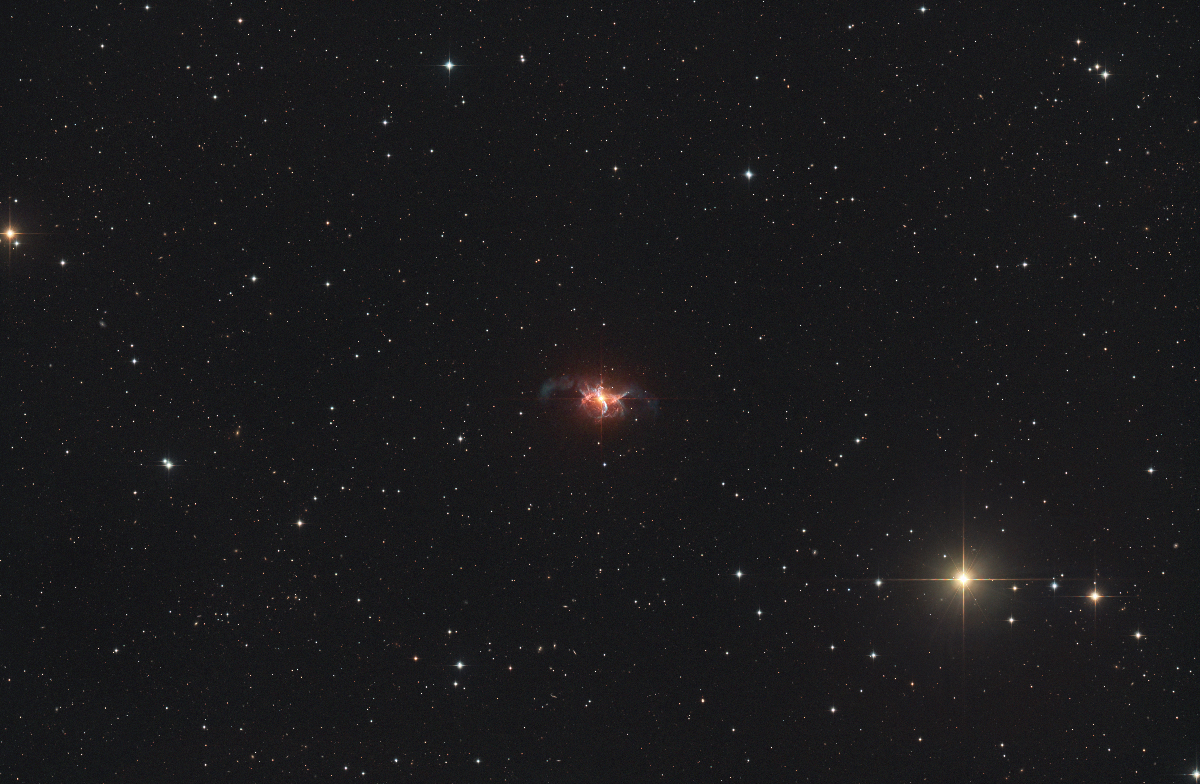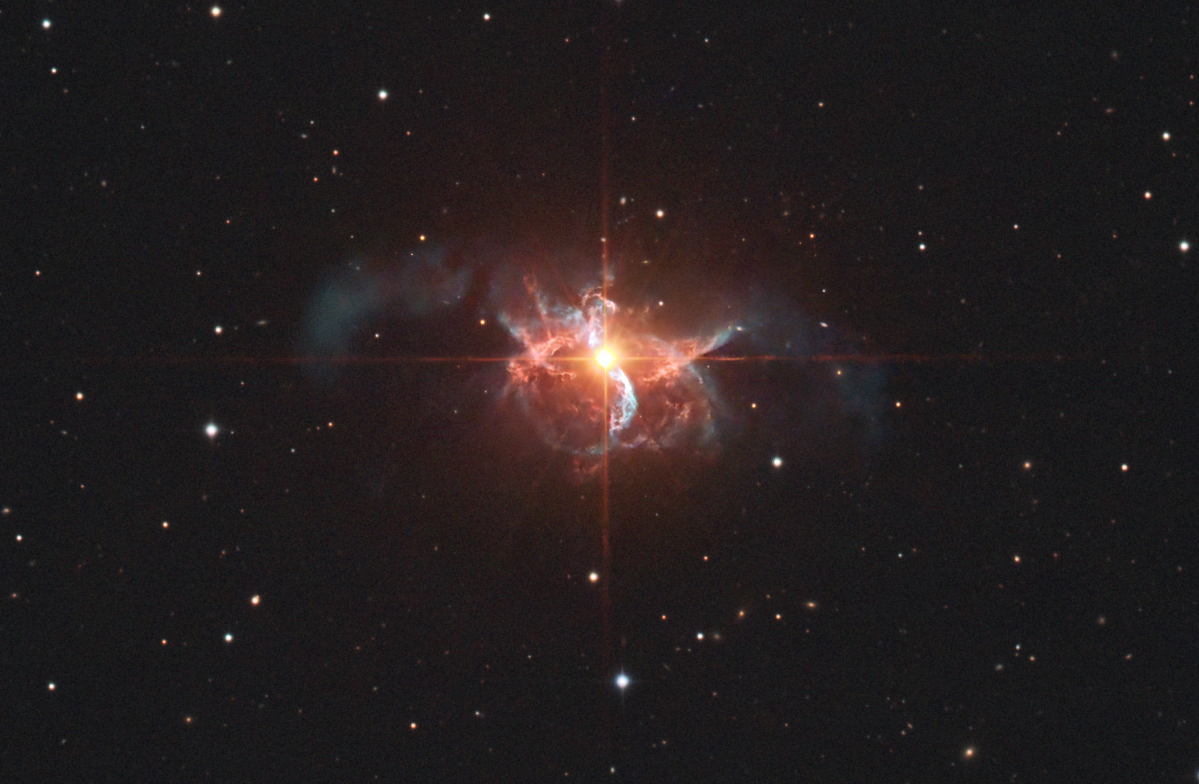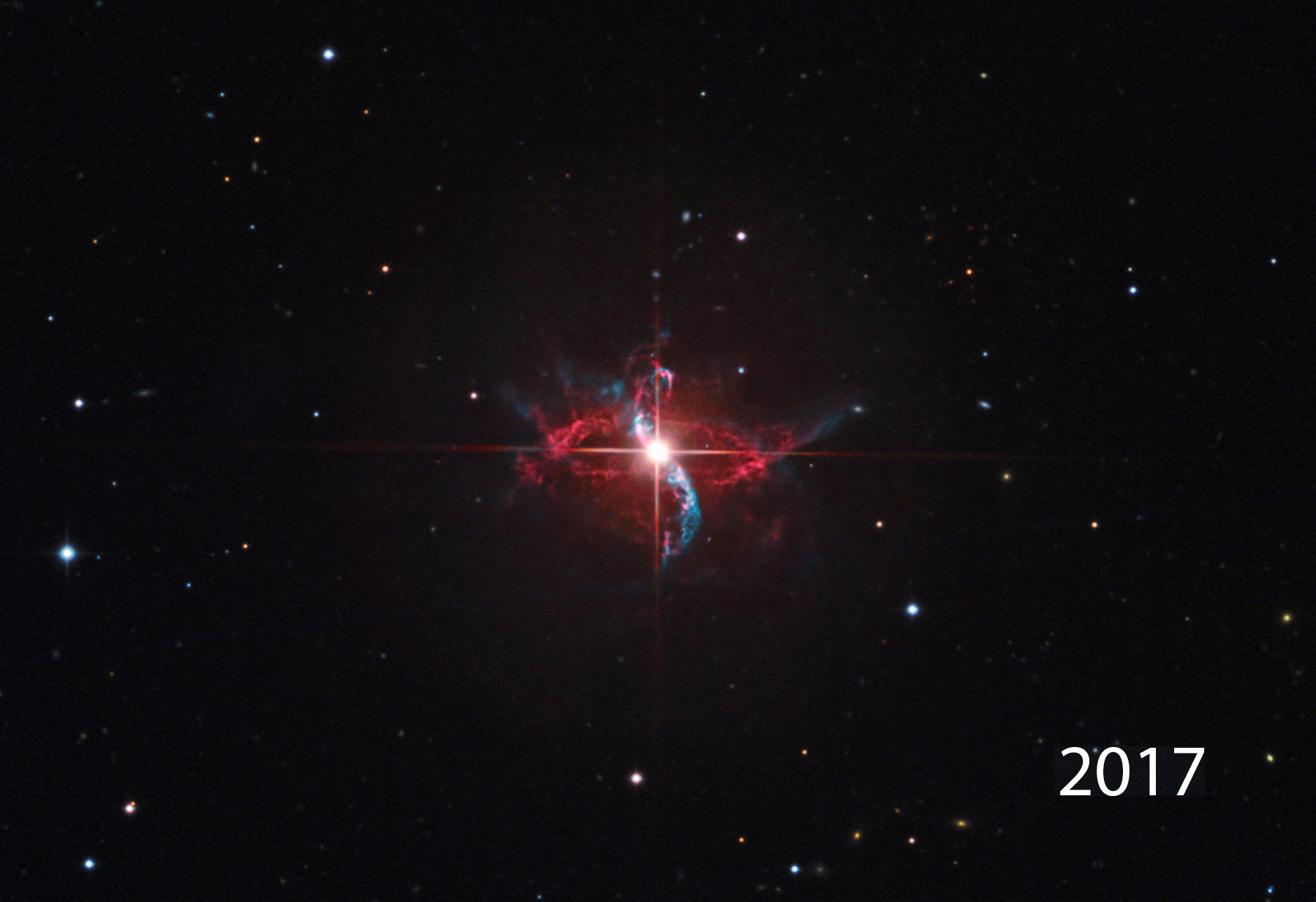
[back] R Aquarii in Aquarius
Higher resolved image / höher aufgelöstes Bild (5883 x 3843 Pixel)

|
(c) 2024 All astro photo images are copyrighted. They may not be used or reproduced without explicit written permission from the authors. |
|
60" |
Cropped 100% version of the image center / beschnittene 100%-Version der Bild-Mitte

|
(c) 2024 All astro photo images are copyrighted. They may not be used or reproduced without explicit written permission from the authors. |
|
About this Image / Über dieses Bild
| CCD: | Omegon veTEC410c |
| Image Type, Orientation: | RGB-HaOIII Composite, North is at 12:00h |
| Exposure time: | RGB: 20x300s, HaOIII: 143x300s (13:35h total) |
| Exposure date: |
October 9th/10th/16thr 2023 |
| Location: | Capella Observatory at Skinakas, Crete/Greece,robotic (with babysitting from Bad Arolsen/Germany) |
| Filter: | RGB: Internal Bayer-Matrix, HA/OIII: STC Astro Duo-Narrowband Filter |
| Instrument: | Ganymed 60cm-Hypergraph in primary focus (f=1840 mm) |
| Photographer: | Josef Pöpsel, Frank Sackenheim, Stefan Binnewies |
|
Remarks: |
R Aquarii is a so-called symbiotic double star, consisting of an M7III Mira star and a compact white dwarf star. As the dwarf approaches the Mira star, the latter sucks matter from its partner via an accretion disk. Once a certain amount of mass has been transferred to the dwarf, it develops into a nova. Over time, the gas masses ejected by the nova at supersonic speeds formed the interestingly shaped nebula around R-Aquarii. The nebula changes so quickly that you could already see differences in images taken only a few years apart. Below a blink comperison with an image of the Chart32 team from 2017 can be seen. |
|
Bemerkungen: |
R Aquarii ist ein sogenannter symbiotischer Doppelstern, bestehend aus einem M7III Mira Stern und einem kompakten weißen Zwergstern. Kommt der Zwerg dem Mira Stern näher, saugt dieser Materie von seinem Partner über eine Akkretionsscheibe ab. Ist eine gewisse Masse auf den Zwerg übergegangen, entwickelt sich dieser zur Nova. Die durch die Nova mit Überschallgeschwindigkeiten heraus geschleuderten Gasmassen bildeten mit der Zeit den interessant geformten Nebel um R-Aquarii. Der Nebel verändert sich so schnell, dass man schon Unterschiede in Aufnahmen, die nur wenige Jahre auseinander liegen, sehen kann. Unten ist ein Blink-Vergleich mit einer Aufnahme des Chart32-Teams aus dem Jahr 2017 zu sehen. |
Blink comperison with an image of the Chart32 team from 2017

|
(c) 2024 All astro photo images are copyrighted. They may not be used or reproduced without explicit written permission from the authors. |
|
Back to the Diffuse Nebulae Overview / Zurück zur Diffuse-Nebel-Übersichtsseite